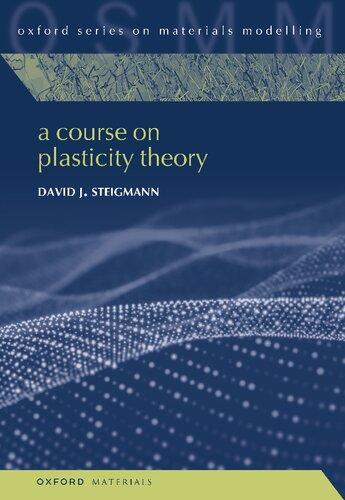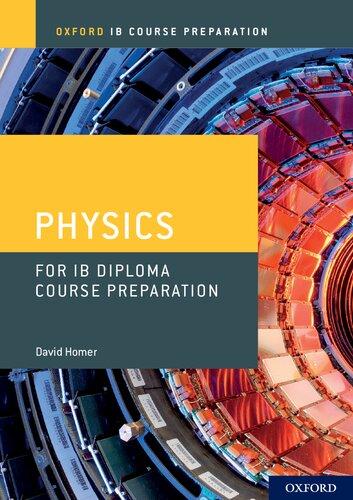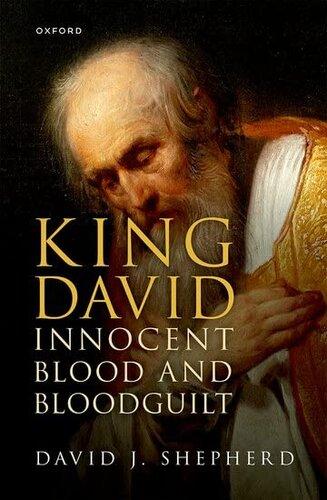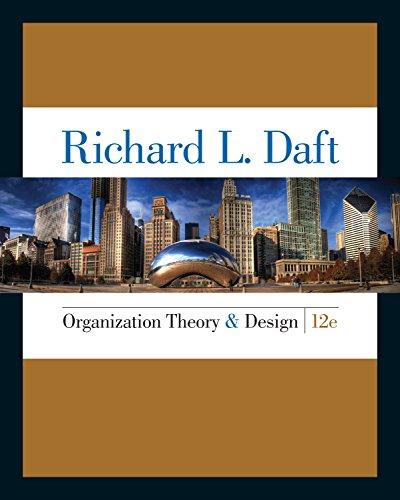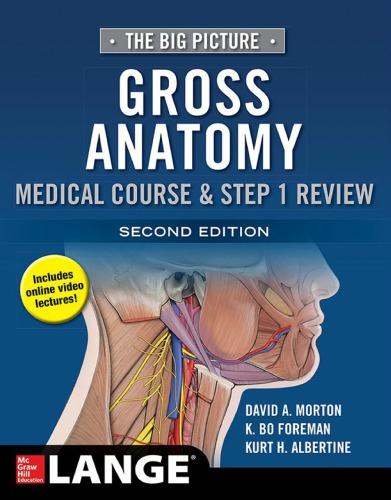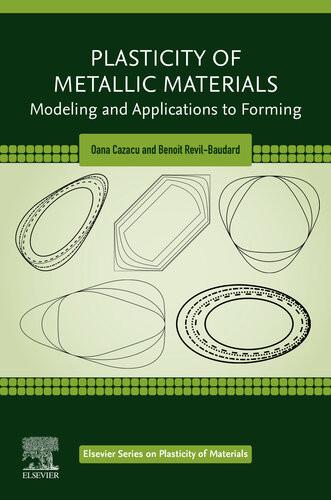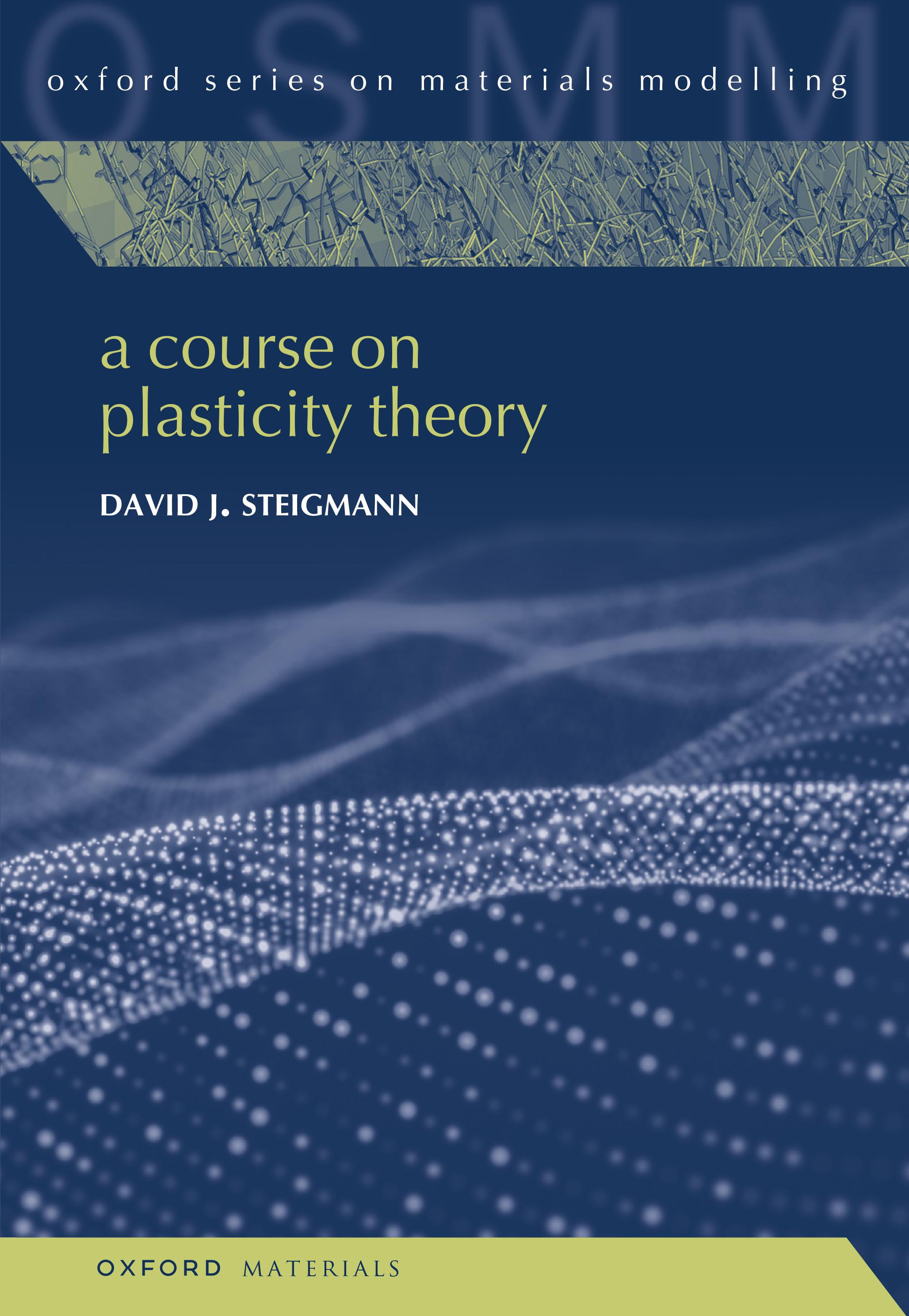A Course on Plasticity Theory
David J. Steigmann
Department of Mechanical Engineering, University of California, Berkeley
Great Clarendon Street, Oxford, OX2 6DP, United Kingdom
Oxford University Press is a department of the University of Oxford. It furthers the University’s objective of excellence in research, scholarship, and education by publishing worldwide. Oxford is a registered trade mark of Oxford University Press in the UK and in certain other countries
© David J. Steigmann 2022
The moral rights of the author have been asserted
Impression: 1
All rights reserved. No part of this publication may be reproduced, stored in a retrieval system, or transmitted, in any form or by any means, without the prior permission in writing of Oxford University Press, or as expressly permitted by law, by licence or under terms agreed with the appropriate reprographics rights organization. Enquiries concerning reproduction outside the scope of the above should be sent to the Rights Department, Oxford University Press, at the address above
You must not circulate this work in any other form and you must impose this same condition on any acquirer
Published in the United States of America by Oxford University Press 198 Madison Avenue, New York, NY 10016, United States of America
British Library Cataloguing in Publication Data Data available
Library of Congress Control Number: 2022942494
ISBN 978–0–19–288315–5 DOI: 10.1093/oso/9780192883155.001.0001
Printed and bound by CPI Group (UK) Ltd, Croydon, CR0 4YY
Links to third party websites are provided by Oxford in good faith and for information only. Oxford disclaims any responsibility for the materials contained in any third party website referenced in this work.
Tomyfamily
Preface
Thetheoryofplasticityhasalongandinterestinghistorydatingbackabouttwoanda halfcenturies.Activityinthefieldexpandedrapidlyoverthecourseofthepastcentury inparticular,givingrisetoarapidpaceofadvancement.Duringmuchofthelatterphase ofitsmoderndevelopment,thefieldwasbesetbyambiguityandcontroversyconcerning someofitsconceptualfoundations.Unsurprisingly,thisledtotheemergenceofdifferent,oftenincompatible,schoolsofthoughtonthesubject.Acomprehensivesurveyof thestateofplasticitytheoryduringthisperiodmaybefoundinthereviewarticleby Naghdi.Meanwhile,greatstrideswerebeingmadebyappliedmathematiciansinlayingthefoundationsofmoderncontinuummechanics.Theiremphasisonpermanence andrigormeantthattheunsettledsubjectofplasticitytheorywaslargelyavoided,however,withtheresultthatthislacunainthepanoplyofcontinuumtheoriesbegantobe filledquiterecently,aroundtheturnofthemillennium,aftertheantagonismoftheolder schoolshadbeguntofade.
Practicallyeverythingknownaboutplasticitythroughthemiddleofthepastcentury isdocumentedinthesuperbtreatisesbyPragerandHodge,Nadai,Hill,andKachanov, whichshouldbecarefullyreadbyanyseriousstudentofoursubject.Ataroundthesame time,newdevelopmentsweretakingplaceintheapplicationofdifferentialgeometryto thecontinuumtheoryofdefectsassociatedwithplasticity.Thishasbecomealargeand activedisciplineinitsownright,andasubstantialpartofthisbookisdevotedtoit. TheworksofBloomandWang,andthevolumeeditedbyKröner,arerecommendedto thoseinterestedinlearningaboutitsfoundations,whilethosebyClayton,Epsteinand El anowski,Epstein,andSteinmanncovermanyofthemorerecentdevelopments.The modernengineeringtheory,asdistinctfromthegeometricaltheory,isablysummarized inthebooksbyLubliner,BesselingandvanderGiessen,andBigoni.ThebooksbyHan andReddyandbyGurtinetal.arerecommendedformathematicaldevelopmentsand someofthemorerecentthinkingonthesubject.
WhilewritingthisbookIhavebeenguidedbythebeliefthatonecanalwayslearn somethingfromanythoughtfulperson.Accordinglythecontentsreflectmyunderstandingoftheworkofresearchersandscholarsspanningalargeanddiverserangeofviews onthesubjectofplasticity.Inthecourseofsurveyingthemodernliterature,Ihavebeen struckbythecontinuingisolationofthevariousschoolsfromoneanother,withscant evidenceofcross-fertilization.Particularlyglaring,frommyperspective,isthelackof acknowledgmentoftheeffortsofNollinlayingthefoundationsofthemoderntheory. ThishasbeenrectifiedtoagreatdegreebyEpsteinandEl anowski,andIfollowtheir leadingivingprimacytoNoll’sperspective.Infairness,Nollisnotaneasyread,and muchstudyisneededtograspthefullimportofhiswork.
Thebookiscertainlynotself-contained.Readersarepresumedtohavehadprior exposuretoagoodintroductorycourseonbasiccontinuummechanicsatthelevelof theexcellentbooksbyChadwickandGurtin,forexample.Aspectsofthisbasicbackgroundaresummarizedasneeded,butnotdevelopedinanydetail.Theemphasishere isonconceptualissuesconcerningthefoundationsofplasticitytheorythathaveproved challenging,tomeatleast.Thesehaveledmetotheviewthatthetimehascometoseek ameasureofconsolidationandunificationinthefield.Idonotignoretheclassicaltheory,butratherdevelopitfromtheperspectiveofthemoderntheory.Forexample,the classicaltheoryofperfectlyplasticsolidswaspresentedhistoricallyinawaythatledto itsnaturalinterpretation,fromthevantagepointofmoderncontinuummechanics,asa theoryofnon-Newtonianfluidsratherthanasamodelofthebehaviorofcertainsolids. Theresolutionofthisdilemmaisaprimeexampleoftheclaritythatcanbeachieved onceasecurelogicalfoundationforthegeneraltheoryhasbeenestablished.
Someexplicitsolutionstotheequationsofplasticitytheoryarecoveredinthisbook, butnotnearlytotheextentfoundintheolderbooks.Thereasonforthisomission is,firstly,thatthesmallcollectionofexplicitsolutionsthatareknownisablycovered elsewhere,sothatduplicationishardlyjustified,andsecondly,thatduetotheadvent ofmoderncomputing,theyarenotnearlyasrelevantastheyoncewere.Idevotethe remainderofthebooktothetheoreticalfoundationsofthesubject,inaccordancewith myownpredilections,ratherthantomattershavingtodowithcomputation.Thereason forthisemphasisismybeliefthatstudentsaretypicallynotaswellversedintheconceptualfoundationsastheyshouldbeiftheyaretorealizethefullpotentialofcomputational mechanics.Anumberofexercisesofvaryingdegreesofdifficultyappearthroughout. Theseservetoreinforceunderstandingandtoencouragethereadertofillinanygapsin thedevelopment.Comprehensivesolutionstoselectedexercisesareincludedattheend ofthebook.
Thosewhomighthavereadmypreviousbook, FiniteElasticityTheory,willfindthe styleandpresentationofthisonetobequitefamiliar.Thepresentbookisperhapsabit moredemanding,however,insofarasvariousconceptsfromnon-Euclideandifferential geometryarecoveredindetail.Igratefullyacknowledgethesmallgroupofdedicated graduatestudentsattheUniversityofCalifornia,Berkeley,whoseinterestandpersistenceprovidedtheimpetusforthedevelopmentofagraduatecourseonwhichthebook isbased.Iamespeciallygratefultooneofthem,MiladShirani,forhiscriticalreading ofthemanuscriptandforpreparingthefigures.
DavidSteigmann Berkeley,2021
References
Besseling,J.F.,andvanderGiessen,E.(1994). MathematicalModellingofInelasticDeformation. ChapmanandHall,London. Bigoni,D.(2012). NonlinearSolidMechanics:BifurcationTheoryandMaterialInstability.CambridgeUniversityPress,Cambridge,UK.
Bloom,F.(1979). ModernDifferentialGeometricTechniquesintheTheoryofContinuousDistributions ofDislocations.LectureNotesinMathematics,Vol.733.Springer,Berlin.
Chadwick,P.(1976). ContinuumMechanics:ConciseTheoryandProblems.Dover,NewYork. Clayton,J.D.(2011). NonlinearMechanicsofCrystals.Springer,Dordrecht. Epstein,M.(2010). TheGeometricalLanguageofContinuumMechanics.CambridgeUniversity Press,Cambridge,UK.
Epstein,M.,andEl˙zanowski,M.(2007). MaterialInhomogeneitiesandTheirEvolution.Springer, Berlin.
Gurtin,M.E.(1981). AnIntroductiontoContinuumMechanics.AcademicPress,Orlando. Gurtin,M.E.,Fried,E.,andAnand,L.(2010). TheMechanicsandThermodynamicsofContinua. CambridgeUniversityPress,Cambridge,UK.
Han,W.,andReddy,B.D.(2013). Plasticity:MathematicalTheoryandNumericalAnalysis Springer,N.Y. Hill,R.(1950). TheMathematicalTheoryofPlasticity.ClarendonPress,Oxford.
Kachanov,L.M.(1974). FundamentalsoftheTheoryofPlasticity.MIRPublishers,Moscow. Kröner,E.(Ed)(1968). Proc.IUTAMSymposiumonMechanicsofGeneralizedContinua.Springer, N.Y.
Lubliner,J.(2008). PlasticityTheory.Dover,N.Y. Nadai,A.(1950). TheoryofFlowandFractureofSolids.McGraw-Hill,N.Y. Naghdi,P.M.(1990).Acriticalreviewofthestateoffiniteplasticity. J.Appl.Math.Phys. (ZAMP) 41,315–394.
Noll,W.(1967).Materiallyuniformsimplebodieswithinhomogeneities. Arch.Ration.Mech. Anal.27,1–32. Prager,W.,andHodge,P.G.(1951). TheoryofPerfectlyPlasticSolids.JohnWiley&Sons,N.Y. Steigmann,D.J.(2017). FiniteElasticityTheory.OxfordUniversityPress,Oxford. Steinmann,P.(2015). GeometricalFoundationsofContinuumMechanics:AnApplicationtoFirst andSecond-OrderElasticityandElasto-Plasticity.LectureNotesinAppliedMathematicsand Mechanics,Vol.2.Springer,Berlin. Wang,C.-C.(1979). MathematicalPrinciplesofMechanicsandElectromagnetism.PartA:Analytical andContinuumMechanics.PlenumPress,N.Y.
6.5Yieldingandplasticflow
7.1Theflowrule
7.2VonMises’yieldfunction
7.3Theclassicaltheoryforisotropicrigid-plasticmaterials
7.4Bingham’smodelofviscoplasticity
7.4.1Example:Steadychannelflow
7.5Planestrainofrigid-perfectlyplasticmaterials:Slip-linetheory
7.5.1Stress,equilibrium
7.5.2Velocityfield
7.5.3Cartesianformoftheequations
7.5.4Furthertheoryforplanestrain
7.5.5Axisymmetricstateexteriortoatraction-freecircularhole
7.6Anti-planeshear
8.1Thedisplacementfield
9.3.1Crystallinesymmetry
9.3.2Isotropy
9.4Scale-dependentyielding
9.5Gradientplasticity
9.5.1Energeticresponsefunctions
9.5.2Stresspower,balancelaws,anddissipation
Preliminaries
Webeginwithafairlydescriptivediscussionofthemainobservationsaboutplastic behaviorandthebasicmechanismsresponsibleforit.Thisisfollowedbyabriefresumé ofthestandardcontinuumtheorythatunderpinsoursubsequentdevelopmentofa theoreticalframeworkforthedescriptionofelastic-plasticresponse.
1.1 Phenomenology
Muchofthebasicphenomenologyofplasticitycanbeunderstoodintermsofasimple tension-compressiontestonauniformmetallicbar.Supposethebarhaslength l0 inits unloadedstate,andlet T = F/A betheuniaxialCauchystressinthedirectionofthebar axis,where F istheaxialforceand A isthecross-sectionalareaofthedeformedbar. The stretch ofthebar,presumedtobestrainedhomogeneously,is λ = l/l0,where l is thebar’slengthwhendeformed.Ifthestressisnottoolarge,theresponseofthebaris typicallywelldescribedbythelinearrelation
betweenthestressandthelogarithmicstrainln λ,inwhichtheproportionalityconstant E isYoung’smodulus—apropertyofthematerialofwhichthebarismade.Thisrelation presumesthestateofthebar,asdeterminedbythestretchandtheCauchystress,tobe uniform.Thebaristheninequilibriuminsofarastheeffectsofbodyforces(e.g.,the weightofthebar)canbeneglected.
Therangeofstressesforwhichthisrelationholdsislimited.Itfailswhenthestress reachescertainlimits,calledthe yieldstresses inuniaxialtensionorcompression.Often theselimitscoincideinmagnitude,sothat(1.1)isvalidprovidedthat
where TY,anotherpropertyofthematerial,isthe initial yieldstress,thequalifierreflectingthefactthattheyieldstressusuallyevolveswiththestateofthematerialunder continueddeformation,itscurrentvaluetypicallyexceedingtheinitialvalue.Thisphenomenon,called strainhardening,isdepictedschematicallyinFigure 1.1.Ifthebaris
ACourseonPlasticityTheory.DavidJ.Steigmann,OxfordUniversityPress.©DavidJ.Steigmann(2022). DOI:10.1093/oso/9780192883155.003.0001
Figure1.1 Uniaxialstress–strainresponseofabar.
unloadedtozerostressfromastateinwhichthevalueof |ln λ| exceedsthatassociatedwithinitialyield,thenthebardoesnotreturntoitsinitiallength l0,butrather toanintermediatelength li.Wesay,ratherloosely,thatthebarhasbeenpermanently deformed.The plasticstretch associatedwith li is λp = li/l0.Further,theslopeofthe unloadingcurveisapproximatelyconstantandequaltothatoftheloadingcurve, namely E. Thestretch λ ofthebarjustpriortounloadingisthusgivenby
where λe = l/li isthe elasticstretch,sonamedbecause,accordingtothegraph,
Thus,theelasticstretchbearsthesamerelationtothestressasthatassociatedwiththe initialelasticresponseofthebar.
Thephenomenologyjustdescribedleadsimmediatelytotheimportantobservation thattheelasticpropertiesofthematerial,asreflectedintheuniaxialcasebyYoung’s modulus,areroughlyinsensitivetoplasticdeformation.Thisobservationcarriesoverto otherelasticpropertiesofcrystallinematerials,asdocumentedintheextensiveexperimentalworkofG.I.Taylorandassociatesandsummarizedintheintroductorychapter of Hill’s classictreatise.Inparticular,thebasiclatticestructureofametalliccrystal,the seatofitselasticproperties,remainslargelyundisturbedbytherelativeplasticslipof
crystallographicplanes.Thisobservationwillbeincorporatedasacornerstoneofthe theorytobedeveloped.
Beyondthisitisinvariablytruethat TY/E ≪ 1inmetals,implyingthat |T| /E ≪ 1 andhencethat |ln λe|≪ 1.Accordingly, T ≃ Eεe,where εe = λe 1;thatis,theelastic strain εe isinvariablysmallinmagnitude.Afurtherobservationabouttheuniaxialbar testisthat λp remainsunchangedaslongas |T| <TY,thecurrentvalueoftheyieldstress justpriortounloading.Indeedtheprimarypurposeofplasticitytheoryistodescribe how λp,or,moreaccurately,itsthree-dimensionalcounterpart,evolveswhentheyield limitisreached.Inconnectionwiththisitisnecessarytohaveaneffectivemodelofstrain hardening,thisarguablyconstitutingthemainopenproblemofthephenomenological theory.Indeedthisaspectofthesubjectisaprincipalfocusofmuchcontemporary research.Laterinthebook,wewillendeavortosummarizesomeofthecurrentthinking inthisarea.
Wehavementionedtheroleofslipalongcrystallographicplanesasabasicmechanism ofplasticdeformation,givingrisetoanoverallsheardeformationonthemacro-scale. Thisisessentiallyafrictionalprocessandthusentailsthedissipationofenergy.The slidingdoesnottakeplaceallatonce,butisinsteadtheproductoftheprogressivemovementof dislocations throughthecrystallattice.Clearillustrationsofthisphenomenon aregiveninFigure 102.2 inthebookby Gurtinetal. andChapter1ofthebookby KovácsandZsoldos.Roughly,themovementofadislocationisinitiatedbythebreakingofanatomicbondbetweentwoatomsoccupyingadjacentlayersastheydisplace relativetoeachotherinresponsetoanappliedshearstress,say.Adisplacedatomthen formsabondwithitsnewnearestneighbor.Thisprocesscontinuesinasequentialmanneruntilalltheatomsinagivenlayeraredisplacedbyonelatticespacingrelativeto thoseoccupyingtheadjacentlayer.Thereasonwhythisprocessoccursviathepassageofadislocationratherthanallatonceisthatthedislocationmechanismrequires substantiallylesseffort.Thiscanbereadilyunderstoodintermsofthefamouscarpet analogy:Thus,imaginebeingtaskedwiththejobofdisplacingacarpetacrossafloor, allthewhilemaintainingasubstantialamountofcontactbetweenthetwo.Thisisthe analogoftherelativeplasticslipofadjacentplanesofthelattice.Onecandragthecarpetwholly,ofcourse,butitismucheasiertocreateanarrowwrinkleatoneendand simplypushitacrosstheremainingpartofthecarpet.Theneteffectofthisprocedureisthattheentirecarpethasbeendisplacedenmasseonceithasbeentraversedby thewrinkle.
Adislocationengendersalocaldistortionofthelatticeinthecourseofitsmovement alongacrystallographicplane.Recallingthatthelatticeistheseatoftheelasticresponse ofthematerial,itfollowsthatdislocationsindirectlyinducealocalstressfieldintheir vicinity.Thus,totheextentthatdislocationsarepresentinanunloadedcrystal,they generateafieldof residualstress inthematerial.Thistooissomethingthatagoodtheory shouldbeabletopredict.
Naturallydislocationsinrealcrystalsare,likeatoms,discretefeatures,but,likeatoms, theyareusuallysodenselydistributedinatypicalsampleastorendermeaningfultheir descriptionintermsofacontinuousdistribution.Wethenspeakofa dislocationdensity in muchthesamewayasmassdensityisusedtomodeldenselydistributedmatter.Inturn,
thenotionofadislocationdensityhasafascinatingconnectionwithcertainconceptsin non-Euclideandifferentialgeometry,tobeexploredlater.
Mostmetallicpartsusedinengineeringapplicationsarepolycrystalline,consisting ofsmallgrainsofpurecrystalwithinwhichthemechanismofdislocationmotionis operative.Thesegrainsjoinatgrainboundaries,wheretheirinteractionscontributeto theoverallplasticresponseoftheaggregate.Oftenthesegrainsaremoreorlessrandomlyoriented,sothatatamesoscopicscaletheaggregaterespondsinthemannerof anisotropiccontinuum.Forthisreasontheclassicaltheoryofplasticityisconcerned almostexclusivelywiththeresponseofisotropicmaterials,whereastheoriesforcrystallinematerialsarelargelyconfinedtotheresearchliterature.Thevolumeeditedby Teodosiu andthebooksby HavnerandGurtinetal. areexceptionstothisruleandconstituteessentialreadinginthefieldofcrystalplasticity.Thisisnottosaythatthetheory forisotropicmaterialsispassé.Onthecontrary,thedifficultiesencounteredinreconcilingclassicalplasticitytheorywithmoderncontinuummechanicsarereadilyresolved intheframeworkofthemoderntheory.Accordinglywedevotesubstantialspacetothe isotropictheoryinthisbook.
Weconfineattentiontothepurelymechanicaltheorybecausethisiswherethemain conceptualchallengeslie.Treatmentsofthethermodynamicaltheorymaybefoundin thebooksby EpsteinandEl anowski andby Maugin.
1.2 Elementsofcontinuummechanics
Forthemostpart,ourdevelopmentisbasedonthestandardframeworkofcontinuum mechanicsasconceivedbyCauchy.Thus,wedonottakecouplestressesorhigherorder stressesintoaccount.Thisisverymuchinaccordwiththevastmajorityofworkinplasticitytheory.Muchofthemodernliteraturealsoseekstodescribelength-scaleeffects associatedwithplasticresponse.Thisistypicallymodeledbyincludinggradientsofplasticdeformationamongthevariablesappearinginconstitutiveequations,whilekeeping muchofCauchy’sframeworkintact.Wewilldevotesomeeffortlatertoadiscussionof thesedevelopments.Fornow,however,weshallbecontentwithabriefsurveyofthe basicelementsofcontinuummechanicsthatareneededforourwork.Detaileddiscussionsofeverythingsaidheremaybefoundinthetextbooksby Gurtin, Chadwick,and Liu,forexample.
Concerningnotation,weadoptthestandardsymbols At , A 1 , A∗ , SymA, SkwA, DevA,and JA.Theseare,respectively,thetranspose,inverse,cofactor,symmetricpart, skewpart,deviatoricpart,anddeterminantofasecond-ordertensor A.If A isinvertible, then A∗ = JAA t.Wealsouse Sym toidentifythelinearspaceofsymmetrictensors. Thetensorproductof3-vectorsisindicatedbyinterposingthesymbol ⊗,i.e., a ⊗ b, andisdefinedby (a ⊗ b)v = (b v)a foranyvector v. TheEuclideaninnerproduct oftensors A,B isdenotedanddefinedby A B = tr(ABt),where tr( ) isthetrace;the inducednormis |A| = √A · A.Forafourth-ordertensor A,thenotation A[B] stands forthesecond-ordertensorresultingfromthelinearactionof A on B. Itstranspose At isdefinedby B ·At[A] = A ·A[B],and A issaidtopossessmajorsymmetryif
At = A.If A ·A[B] = At ·A[B] and A ·A[B] = A ·A[Bt],then A issaidtopossess minorsymmetry.Thenotation ( )A,withaboldsubscript,standsforthederivativeofa functionwithrespecttotensor A
Supposeabody B,consistingofafixedsetofmaterialpoints,occupiesaconfiguration κt attime t,aregioninathree-dimensionalEuclideanspace.Therestriction toEuclideanspaceisnotsufficientlygeneraltoaccommodateallconditions.Rather, itreflectsaprejudicederivedfromourterrestrial,non-relativistic,experience,whichis neverthelesssufficienttocovermostproblemsthatariseatthelevelofourpresenttechnologicaldevelopment.Let y bethepositionin κt,relativetoaspecifiedorigin,ofa materialpoint p ∈ B.Toconveythenotionthatthispositionisoccupiedby p,andonly by p,weconceiveofaninvertiblemap χ from B to κt suchthat
Ratherthandealwiththeetherealbody B directly,tofacilitateanalysiswepicksome fixedregionofEuclideanspace,labeled κ,thatstandsinone-to-onerelationtoit.We callthisa reference configuration.Forexample,itisusuallyconvenienttochoosearegion thatcould,inprinciple,beoccupiedbythebody,evenifitisneveractuallyoccupiedin thecourseofitsmotion.Quiteoftenanalystschoose κ = κt0 ,theactualconfigurationat time t0,whichofcourseautomaticallyfulfillstheoccupiabilitycondition.Whateverthe choiceofthereferenceconfiguration,westipulatethatthereexistsaone-to-onemap
from B to κ suchthat
where x isthepositionof p in κ relativetosomefixedorigin.Inthiswayweeffectively identify p withtheposition x thatitoccupiesinourchosen κ.Wethenhaveaone-to-one relation
calledthe deformation of p from κ to κt,where
inwhichthesubscriptisintendedtoidentifyourchoiceof κ.Attheriskofbeing imprecise,weusuallysuppressitwhenthereisnoriskofconfusion,andsimplywrite
, (1.9) withthecaveat,ofcourse,thatthisis not thesamefunctionasthatappearingin(1.5). Wearetypicallyinterestedindeformationsthatarecontinuousanddifferentiable, meaningthatformaterialpoints p1 and p2 occupyingpositions x1 =κ(p1) and x2 =κ(p2),
respectively,thatareneartoeachotherin κ,thereexistsatensorfield F(x, t),calledthe deformationgradient,suchthat
inwhichtheLandausymbol o(ϵ) identifiestermsthataresmallerthan ε forsmall ϵ; thatis, o(ϵ)/ϵ → 0as ϵ → 0.Itthenfollowsthat p1 and p2 areneartoeachother in κt aswell.Equation(1.10)definesthedeformationgradientandeffectivelyfurnishesthedefinitionofdifferentiabilityinthiscontext.Indeferencetothisweoften write
todenotethegradientof χ withrespectto x. Theinvertibilityof(1.9)impliesthat F is aninvertibletensor.ThisisaconsequenceoftheInverseFunctionTheorem.Seethe bookby Fleming.
Unfortunately,(1.10)doesnotaffordausefulwaytocomputethedeformationgradientintermsofthefunction χ(x, t).Torectifythis,supposethepoints p1 and p2 are connectedbyasmoothcurve c ⊂ κ witharclengthparametrization x(s),suchthat x1 = x(s1) and x2 = x(s2).Assumingagainthatthesepointsareneartoeachother, wethenhave
where |o(s2 s1)| = o(s2 s1).Combiningthiswith(1.10)gives
andpassagetothelimit
at x = x1,where,with t fixed,
Ofcoursethisisjustthechainrule.Inviewof(1.9)itismeaningfultowriteitinthe form
AswewillseeinChapter4,thisformulaaffordsadirectwaytoobtainexpressionsfor F whenthepositions y and x arespecifiedintermsofcoordinatesystems.Seethebook by Steigmann forsomeexplicitexamples.
Fromwhathasbeensaiditshouldbeevidentthat,atthematerialpoint p, dx(= x′ds) and dy(= y′ds) aretangentialtothecurves c ⊂ κ and ct ⊂ κt,respectively,thelatter havingtheparametricrepresentation y(s, t) = χ(x(s), t).Wecall c a materialcurve ,to conveythemeaningthatitisconvectedbythedeformationtoacurve ct consistingof thesamematerialpoints.Considertwomaterialcurvesthatintersectat x,withtangents dx and du. Thesearetransportedto dy and dz, respectively,where dz = Fdu,with F = F(x, t),asin(1.17).Thelocalstateofdistortionofthesematerialcurvesexistingat thematerialpoint p,occupyingposition x in κ,ischaracterizedby
istherightCauchy–Greendeformationtensor.Choosingthematerialcurvestocoincide, i.e., du = dx,yieldsthesquaredstretchofacurve.Equation(1.18)thenfurnishesthe localanglemadebythetangentstotwomaterialcurvesafterdeformation.
ForourpurposesitwillproveconvenienttoworkwiththeLagrangestrain
whichisinone-to-onerelationtotheCauchy–Greentensor,where I isthereferential unittensor,definedby Iv = v forallvectors v belongingtothevectorspace Tκ associated with κ.Thelatterisoftencalledthetranslationspaceof κ,toconveythenotionthatit coincideswiththesetofallpositiondifferencesthatcanbeformedwithinit.Because κ residesinEuclideanspacebyassumption,thistranslationspaceisidenticaltothe tangentspace oftheunderlying(Euclidean)manifold.Similarly,wedenotethetranslation (tangent)spaceassociatedwith κt by Tκt .Thus,Euclideanspacesareeffectivelyflat inthesensethattheycoincidewiththeirtangentspaces.Morewillbesaidaboutthis inChapter3.
Havingdiscussedthebareessentialsofthekinematicsofdeformation,wemoveonto thebasicbalancelawsconcerningmassandmomentum.
Let ρ(y, t) bethe(positive)massdensityofthebodyintheconfiguration κt.Themass ofasubregion πt ⊂ κt issimply
where π ⊂ κ istheimageof πt undertheinversedeformation,i.e., πt = χ(π, t),meaning thatthetworegionsarerelatedbythedeformationmapandconsistofthesamesetof materialpoints;and
where JF = |det F| ,isthereferentialmassdensity.Thisissimplythefamiliarchange-ofvariableformulafromcalculus.Inthisbookweassume κ isoccupiable,sothatdet F >0, butthisisbynomeansessential.
Theprincipleofconservationofmassistheassertionthatthemassofafixedset ofmaterialpointsremainsinvariantintime.Therefore,thetimederivativeof M(πt) vanishes.Becausethedomain π isfixedforthematerialpointsthatoccupy πt,wecan passthederivativethroughtheright-mostintegral—assumingsufficientregularityofthe integrand—toobtain
wherethesuperposeddotisthe materialderivative,thepartialtimederivativeholding p, andhence x, fixed.Because π isanarbitrarysubvolumeof κ,assumingtheintegrandto becontinuouswecaninvokethe localizationtheorem—basicallythemean-valuetheorem forintegrals—toconcludethattheintegrandvanishespointwise,i.e.,that ˙ ρκ =0at every x ∈ κ.Inotherwords,thefunction ρκ(x, t) =det F(x, t)ρ(χ(x, t), t),expressedas afunctionof x and t,isindependentof t andhenceafixedfunctionof x. Thisresult doesnotapplyinthepresenceofdiffusion,however.Inthiscaseourreasoningmust beadjustedtoaccountforthefluxofmassthroughtheboundary ∂πt.Seethebookby Gurtinetal.
Thebalanceoflinearmomentumistheassertionthatthenetforceactingonthe materialoccupying πt isbalancedbytherateofchangeofitsmomentum.Thus,
where t, the traction,isthearealdensityofcontactforce, b isthebodyforceperunitmass, and v = ˙ y = ∂ ∂t χ(x, t) isthematerialvelocity.Toreducetheright-handsideweproceed asinthereductionofthemassconservationprinciple.Thus,invokingconservationof massintheform ˙ ρκ =0,wehave
whichreduces(1.24)to
Assumingtheintegrandstobeboundedinmagnitude,thismaybeusedtoestablish that t isafunctionofthetangentplaneto ∂πt atthepoint y ∈ ∂πt;equivalently,afunction oftheunitnormal n to ∂πt at y. Seetheimportantpaperby Noll.Fordefinitenesswe takethistobetheexteriorunitnormal.Withthisresultinhandwemayproceedvia Cauchy’stheoremtoshowthatthedependenceislinear,andhencethatthereexistsa tensorfield T(y, t),the Cauchystress,suchthat
Substitutinginto(1.26)andinvokingthedivergencetheorem,weobtain
where divA isthevectorfielddefinedby
foranytensorfield A(y, t) andany fixed vector c. Here divw isthescalarfield definedby
where tr isthetraceand gradw, thegradientofavectorfield w(y, t) withrespectto y,is thetensorfielddefined,asin(1.17),by
Assumingtheintegrandin(1.28)tobeacontinuousfunctionof y, wecanlocalize andarriveatCauchy’sequationofmotion,
holdingateach y ∈ κt.Generalizationstodiscontinuousfieldswillbeconsideredin Chapter6.
Thebalanceofmomentofmomentumistheassertionthat
where y isthepositionfieldrelativetoafixedorigin.Invokingconservationofmass,the tractionformula(1.27),thelinearmomentumbalance(1.32),andlocalizingasbefore,
wearriveultimatelyatthelocalalgebraicrestriction
againatevery y ∈ κt.Equations(1.32)and(1.34)areoftenreferredtoasthe spatial equationsofmotion.
Problem1.1 Prove(1.34)bycarryingoutthestepsindicated.
Equivalent referential formsoftheequations,dueessentiallytoPiola,maybederived withtheaidofthePiola–Nansonformula
connectingtheorientedareameasure nda on ∂πt toitscounterpart νdA on ∂π.Here
isthe cofactor of F. Thus,from(1.22),(1.26),and(1.27),
isthe Piolastress. Clearly,thisprovidesameasureofforceperunitreferencearea, whereastheCauchystressfurnishesaresolutionofthesameforceperunitareaofsurfaceafterdeformation.Applyingthedivergencetheoremagain,thistimeinthereference configuration,wehave
where Div,thedivergencewithrespectto x,isdefined,withobviousadjustments,inthe samewaythat div wasdefined.Localizingasusual,wefindthat(1.39)isequivalentto
holdingateach x ∈ κ,thisformulationhavingtheconvenientfeaturethatthefunction ρκ(x) isknownapriori,whereasthesymmetrycondition(1.34)isequivalentto
Toexpressthelatterconditioninamoreconvenientformweintroducethe Piola–Kirchhoffstress S,definedby
Then PFt = FSFt andtheinvertibilityof F impliesthat(1.41)isequivalenttothe symmetry
Beforeconcludingthesepreliminarieswepausetostatethemechanicalenergy balance,
isthekineticenergyofthematerialoccupying π,
isthe stresspower,inwhich A B = tr(ABt) isthe innerproduct oftensors A and B, and
isthepoweroftheforcesactingonthematerialin π,inwhich
isthePiolatraction,relatedtotheCauchytraction t by
Themechanicalenergybalancewillplayacentralroleinourdevelopment.
Problem1.2 Derive(1.44)fromthemomentumbalance(1.40).Hint:Dotmultiply (1.40)bythematerialvelocity v.Showthat v · DivP = Div(Pt v) P · ∇v,where ∇ isthegradientwithrespectto x, andthat ∇v = F.Integrateover π ⊂ κ andinvoke thedivergencetheorem.
Withreferencetotheproblem,notethatifwedotmultiply(1.40)byanarbitrary vectorfield u insteadofthematerialvelocity v, wearriveattheintegralstatement
inplaceof(1.44).Itisusual,thoughnodoubtunwisefromthepedagogicalpointofview, tocall u a virtual velocityfield,orworse,avirtual displacement,toemphasizethefact thatithasnothingwhatevertodowiththeactualmaterialvelocity.Thisisthe weakform oftheequationofmotion,sonamedbecauseitrequiresaweakerdegreeofregularity thanthelocal,or strong,form.
Althoughwehaveobtaineditasanecessaryconditionfor(1.40),itisalsosufficient. Toseethiswesimplystartwith(1.50),write P · ∇u = Div(Ptu) u · DivP,andapply thedivergencetheorem,reaching
As u isarbitrary,wechoose
where f(x) isanyfunctionthatvanisheson ∂π,therebyreducing(1.51)to
andhencerequiringthat(1.40)holdlocallyin π,leaving
astheremainingcontentof(1.51).Choosing u = p PN on ∂π thenyields
whichinturnrequiresthat(1.48)holdlocally,ateachpointof ∂π. Moreoftenthisprocedureisinvokedwith π replacedby κ.Inthiscaseposition y = χ(x, t) istypicallyassignedasafixedfunction ϕ(x), say,onapart ∂κy oftheboundary ∂κ ,implyingthattheactualvelocity v vanishesthere.Wethenstipulatethat u should alsovanishon ∂κy,asaconditionofaso-called kinematicallyadmissible virtualvelocity field.Theargumentleadingto(1.53),with π replacedby κ,remainsvalid,butinplace of(1.54)wenowhave
y.Choosing
where g(x) isanyfunctionthatvanishesonthecurve(s) ∂(∂κp) = ∂(∂κy) inaccordance withkinematicadmissibility,wethenhave
whichrequiresthat(1.48)holdpointwiseon ∂κp.
References
Batchelor,G.K.(Ed.)(1958). TheScientificPapersofSirGeoffreyIngramTaylor,Vol.1: Mechanics ofSolids.CambridgeUniversityPress,Cambridge,UK. Chadwick,P.(1976). ContinuumMechanics:ConciseTheoryandProblems. Dover,NewYork. Epstein,M.,andEl anowski,M(2007). MaterialInhomogeneitiesandTheirEvolution.Springer, Berlin. Fleming,W.(1977). FunctionsofSeveralVariables. Springer,Berlin. Gurtin,M.E.(1981). AnIntroductiontoContinuumMechanics. AcademicPress,Orlando. Gurtin,M.E.,Fried,E.,andAnand,L.(2010). TheMechanicsandThermodynamicsofContinua. CambridgeUniversityPress,Cambridge,UK. Havner,K.S.(1992). FinitePlasticDeformationofCrystallineSolids. CambridgeUniversityPress, Cambridge,UK. Hill,R.(1950). TheMathematicalTheoryofPlasticity.OxfordUniversityPress,Oxford. Liu,I-Shih.(2002). ContinuumMechanics. Springer,Berlin. Kovács,I.,andZsoldos,L.(1973). DislocationsandPlasticDeformation. PergamonPress,Oxford.
Maugin,G.A.(1992). TheThermomechanicsofPlasticityandFracture. CambridgeUniversity Press,Cambridge,UK.
Noll,W.(1974).Thefoundationsofclassicalmechanicsinthelightofrecentadvancesin continuummechanics.ReprintedinTruesdell,C.(Ed.), TheFoundationsofMechanicsand Thermodynamics, pp.32–47Springer,Berlin.
Steigmann,D.J.(2017). FiniteElasticityTheory.OxfordUniversityPress,Oxford. Teodosiu,C.(Ed)(1997). LargePlasticDeformationofCrystallineAggregates. CISMCoursesand Lectures,No.376.Springer,Vienna.
Briefresuméofnonlinearelasticity theory
Familiaritywiththebasicelementsofnonlinearelasticitytheoryisessentialtoaproper understandingofvirtuallytheentirerangeoftopicscomprisingsolidmechanicsingeneral,andplasticitytheoryinparticular.Accordinglywedevotethepresentchapterto abriefsurveyofthoseaspectsofnonlinearelasticitythatwillprovecentraltoourlater work.
2.1 Stressandstrainenergy
FollowingNoll’slandmark1958paper,wedefine elasticity tomeanthatthevalueofthe Cauchystress T(p, t) existingatthematerialpoint p ∈ B attime t isdeterminedbythe presentvalueofthedeformationfunction χ(x′ , t) for x′ ∈ Nκ(x),anarbitrary,andhence arbitrarilysmall,neighborhoodoftheplace x occupiedby p inreferenceconfiguration κ.Ourassumptionofdifferentiabilityofthedeformation—see(1.10)—impliesthatthe deformationsinfluencingthisstressareapproximatedby
andarethereforedetermined,atlinear-orderaccuracy,by χ(x, t) and F(x, t). Therequirementofframeinvariancesatisfiedbyallsensibleconstitutivefunctions impliesthattheconstitutiveequationgivingthestressis,amongotherthings, translationinvariant inthesensethatitremainsinvariantunderconstanttimetranslationsand perturbationsoftheposition y currentlyoccupiedbyamaterialpoint.Itisthereforenot explicitlydependenton t or χ(x, t).Accordingly,atleadingorderthestressisdetermined by F(x, t).TerminationatthisorderleadstoNoll’s simplematerial modelofelasticity, accordingtowhich
forsome constitutivefunction Tκ,thesubscriptidentifyingthereferenceconfiguration relativetowhichthedeformationgradientiscomputed.Itisbesttomakethisexplicitto
ACourseonPlasticityTheory.DavidJ.Steigmann,OxfordUniversityPress.©DavidJ.Steigmann(2022). DOI:10.1093/oso/9780192883155.003.0002
avoidconfusionwhenchoosingalternativereferenceconfigurations,asweshalldolater. Ofcourseitispossibletokeepfurthertermsintheexpansion(2.1)andtocontemplate theirinfluenceonconstitutiveequationsforso-called materialsofhighergrade.While theseareimportantanduseful,theyareoflimitedrelevancetothecurrentstateofthe artinplasticitytheory.Giventheconstitutivefunction Tκ fortheCauchystress,thatfor thePiolastress,forexample,relativetothesamereferenceconfiguration,followseasily from(1.38):
Frameinvarianceimposesfurtherrestrictionsontheseconstitutivefunctions,butto savetimewedefertheseandproceedinsteadtoafurtherspecializationofthepurely mechanicaltheory.Thisistheso-called workinequality,whichpositsthatitisnecessary toperformnon-negativeworkonasampleofmaterialtocauseittoundergoahypotheticalcyclicprocess;thatis,aprocessinwhichthedeformationandvelocityfieldsatthe startandendofaprocess,occurringinatimeinterval [t1, t2],coincideateverymaterial point,i.e.,
Takinggradients,theseimplythat
Thisassumptionisrelatedtothehypothesisknownmorepopularlyasthenonexistenceofperpetualmotionmachines.However,giventhatallmaterialpointsofthe sampleareinvolved,thecreationofacyclicprocessisnosmallfeatfromtheexperimentalpointofview.Moreover,whilethisassumptionhasathermodynamicalflavor,itis notinfactaconsequenceofanyprincipleofthermodynamics.Itisneverthelessrealistic, andinaccordwitheverydayexperience.
Proceeding,weimposetheworkinequalityonanarbitrarysubvolume π ⊂ κ,invoke (1.44),and,notingthatthekineticenergiesatthestartandendofthecyclecoincide, concludethat
where S isthestresspowerdefinedin(1.46).Assumingtheintegrandthereintobe continuousin [t1, t2] × π,Fubini’stheorem(see Fleming’s book)ensuresthatwecan interchangetheorderofintegration,andhencethat
Localizingasusual,wehave
andhence,inthecaseofelasticity,
inwhichtheintegralistakenroundasmoothcurvein F-space,inaccordancewiththe definitionofacyclicprocess,andtheparametricdependenceon x, havingnobearingonthediscussion,hasbeensuppressed.Byconsideringthereversalofthiscyclic process—itselfcyclic—itispossibletoshow—seethebooksby Gurtin and Steigmann, forexample—thatthisstatementissatisfiedasanequalityforallsmoothclosedcurves. This,inturn,isnecessaryandsufficientfortheexistenceofa strain-energy function Ψ(F;x), say,suchthat
thegradientof Ψ withrespectto F. Giventhefunction Ψ,thisgradientiseasilycomputed viathechainrulebywriting dΨ asalinearformin dF andreadingoffthecoefficient tensor,i.e.,
Wethushave
andhencetheratherremarkableconclusionthatthestressisdeterminedbyasingle scalar-valuedfunction.Wethenrefer,somewhatdramatically,toa hyperelasticmaterial. Thestrain-energyfunctionhasasargumentsvariablesdefinedon κ,whichshouldthereforebeappendedasasubscript.Inanefforttominimizeclutterwenormallyrefrainfrom doingthiswhenthecontextisclear.
Oncombining(2.2),(2.3),and(2.10),thesymmetrycondition(1.34)satisfiedby theCauchystressmaybeexpressedintermsofthestrain-energyfunctionas
whichinturnisequivalenttothestatement
forarbitraryskew Ω;thatis,forall Ω suchthat Ωt = Ω.Theidentity
allowsustorewritethisas
Ourintentionistocharacterizeallfunctions Ψ thatsatisfythisrequirement.Ifwe succeed,thenwecanreplacethesymmetryoftheCauchystressonceandforallbythe generalformof Ψ tobederived.Beforeundertakingthistask,however,abriefdigression isinorder.
Considertheinitial-valueproblem
where Q(u) isaone-parameterfamilyoftensors,thesuperposeddotstandsforthe derivativewithrespectto u, Ω isafixed,butarbitrary,skewtensor,and i isthespatialidentitytensor.Wewanttoshowthat Q(u) isarotationtensorforallvaluesofthe parameter u
Tothisendwedefine
andfind,with(2.17),thatthissatisfiestheinitial-valueproblem
Clearly Z(u) = i isasolution,andtheuniquenesstheoremforsolutionstoordinary differentialequationsimpliesthatthereisnoother.Thus, Q(u) isorthogonalandhence invertible.Toestablishthatitisarotation,weneedtoshowthatitsdeterminantequals unity.Thisfollowsfromthethefactthatthecofactorofatensoristhederivativeofits determinant,i.e.,
whichvanishesbecause Ω isskew,implyingthat JQ(u) = JQ(0) =1,asclaimed. Returningtothetaskathand,considertheone-parameterfamily
(2.21) with Q(u) asintheforegoing.Becausethispertainstoasingle(butarbitrary)material point,thefactthat F isthegradientofadeformationdoesnotimposeanyrestrictionon itsvaluesbeyond JF0 >0,assumingthereferenceconfigurationtobeoccupiable.We thenhave
Accordingly,forthischoice(2.16)reducesto 0= ΨF · F = Ψ, (2.23)
orsimplythat Ψ(F(u)) = Ψ(F0),wherewehaveagainsuppressedthepassiveargument x. Droppingthesubscriptandreinstatingthisargument,weconcludethatthesymmetry oftheCauchystressimpliestheinvarianceoftheenergyundersuperposedrotations, i.e.,
foranyrotation Q. For Q spatiallyuniform,thisispreciselytheconditionofframeinvarianceoftheenergy,whichimpliesthatitisinsensitivetoarbitraryrigid-bodymotions
superposedonthedeformation χ(x, t),where c isanarbitraryvector.Seethetreatment offrameinvarianceintheimportantpaperby Murdoch anditsadaptationtoelasticity inthebookby Steigmann
Wehaveshownthat(2.24)isnecessaryfor(1.34).Itisalsosufficient.Todemonstrate this,recallthedefinition(1.19)oftheCauchy–Greendeformationtensor.Considertwo deformationgradients F and F andlet Q = FF 1 .Let C and C respectivelybethe Cauchy–Greentensorsformedfrom F and ˜ F.
Problem2.1 If ˜ C = C,showthat ˜ Q t ˜ Q = i,sothat ˜ Q isorthogonal.Conversely,show thatif ˜ Q isorthogonal,then ˜ C = C.
Supposethat Ψ(F; x) = Ψ(F;x) whenever F = QF,with Q arotationandhence orthogonal.Thisissimplyarestatementof(2.24).Then,fromtheproblem,itfollows that Ψ( ˜ F; x) = Ψ(F;x) whenever C = C.Thismeansthat Ψ dependson F throughthe inducedCauchy–Greentensor,andhencethat
Ψ(F;x) = ˆ Ψ(C;x) (2.26)
forsomefunction ˆ Ψ.Equivalently, Ψ(F;x) = U(E;x), (2.27) where,from(1.20), U(E;x) = ˆ Ψ(2E + I; x).
